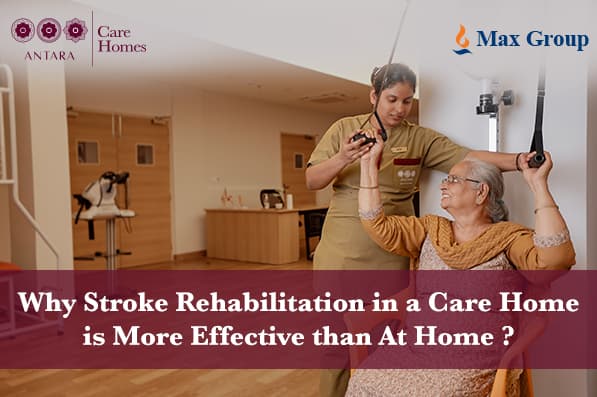
Loading...

Loading...
2025-05-14
Antara
Stroke recovery is a complex journey that varies significantly from person to person. Most stroke survivors face multiple health issues alongside their recovery, making rehabilitation a complex and carefully coordinated journey. The path to recovery involves far more than simply addressing physical limitations—it encompasses a web of medical, functional, social, and emotional factors that interact uniquely with each patient.

Home-based rehabilitation programmes often struggle to deliver the comprehensive care necessary for optimal stroke recovery. Despite the comfort of familiar surroundings, research shows that home-based patients receive significantly fewer therapy sessions compared to those in institutional settings. This disparity leads to measurable differences in outcomes, with hospital-based rehabilitation demonstrating superior improvements in mobility, self-care, pain management, and emotional well-being.
The home environment presents numerous challenges:
Rehabilitation facilities provide structured therapy programmes impossible to replicate at home. These include:
Continuous clinical supervision represents perhaps the greatest advantage of care home rehabilitation. At home, the physical absence of therapists often results in unstructured sessions and reduced patient engagement. Moreover, motivation remains the primary barrier to successful home rehabilitation—while unmotivated patients in facilities still receive therapy and participate in group activities, those at home simply won't engage.
Isolation presents another critical challenge for home-based rehabilitation. Institutional settings naturally create opportunities for social interaction and peer motivation. Furthermore, apathy after stroke remains understudied yet significantly impacts recovery progress. The community atmosphere in care homes helps combat this emotional barrier through shared experiences and group dynamics.
Effective stroke rehabilitation requires coordinated efforts across multiple specialities. Hospital-based settings enable seamless collaboration between physicians, therapists, and specialists. Consequently, between-group comparisons consistently show that hospital-based groups achieve better improvement than home-based groups across multiple quality-of-life indicators. Additionally, care homes provide milestone-based recovery approaches with clear goal-setting and progress tracking throughout the rehabilitation journey.
Care homes provide specialised rehabilitation environments that address the multi-faceted needs of stroke survivors.
The structured rehabilitation approach in care homes encompasses a broad spectrum of therapies aimed at holistic recovery. Nursing homes offer 24-hour access to nursing support for patients who no longer need full hospital care but still require continuous medical supervision. This constant monitoring proves essential, especially during the initial recovery phase.

Comprehensive care home rehabilitation typically includes:
Stroke rehabilitation is a complex journey that requires specialised care and comprehensive support systems. Care homes, therefore, offer distinct advantages over home-based recovery programmes. Research clearly demonstrates that institutional settings provide significantly more therapy sessions than at home. This difference translates directly into measurable outcomes.
Patients struggling with post-stroke recovery face numerous challenges that care homes address effectively. The structured environment eliminates common home rehabilitation barriers such as equipment limitations, space constraints, and inadequate supervision. Additionally, the constant presence of trained experts ensures proper technique and consistent participation, even when motivation wanes.
Social factors certainly play a crucial role in recovery success. Care homes combat isolation through community engagement and peer support, helping patients overcome the emotional hurdles that often accompany stroke recovery. This social dimension and professional psychological support address the full spectrum of rehabilitation needs.
Evidence undoubtedly supports the superiority of care home rehabilitation for most stroke patients. Hospital-based groups consistently show better improvement across multiple quality-of-life indicators than home-based alternatives. Though each patient's journey remains unique, the comprehensive approach offered by specialised care facilities provides the best foundation for meaningful recovery.
Most stroke patients can benefit from rehabilitation in a care home setting, even though individual needs vary significantly:
Care homes employ standardised assessment tools to measure recovery progress objectively and adjust treatment plans accordingly. This systematic approach ensures therapy remains targeted to changing needs. Visual tracking of results over time helps patients monitor their own rehabilitation progress.
Surprisingly, care home rehabilitation often proves more cost-effective despite higher initial costs. This counterintuitive outcome stems from faster recovery and reduced need for long-term care. However, faster recovery in care homes leads to lower overall costs.
Care homes offer comprehensive rehabilitation through a multidisciplinary approach that simultaneously addresses physical, cognitive, and emotional recovery needs.
Family involvement remains essential throughout the rehabilitation journey, with care homes increasingly adopting family-centred approaches to treatment.

Please fill in the form and submit the details to request an appointment.